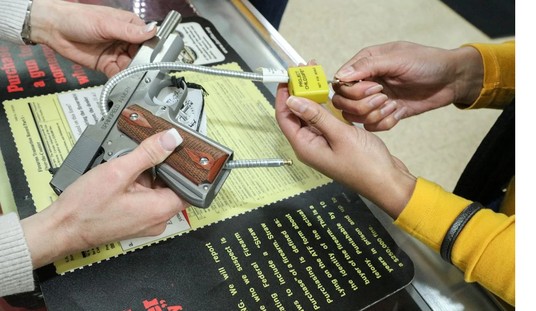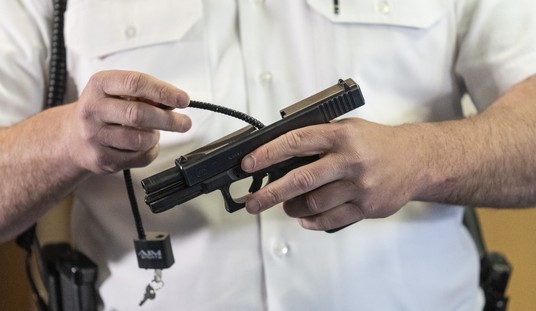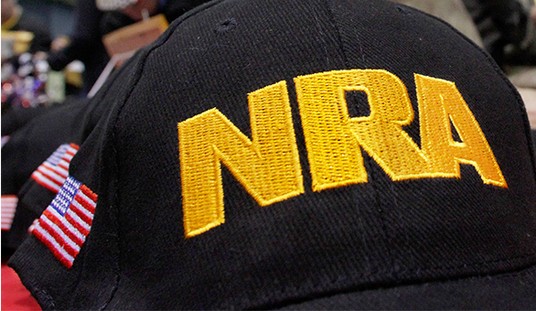A dream is taking flight as one Minnesota entrepreneur’s quad-copter toys may harbinger the future of air combat.
The toys are drones, whose concept lagged the engineering by a decade, said Brad Pedersen, the CEO of QFO Labs, a Bloomington-based technology company.
The current line-up is the NanoQ, a palm-sized drone with a remote-controller that responds to tilts in the user’s hand, like a modern-style computer game controller, he said. The controller is called the Mimix.
The NanoQ is armed to fire infrared beams and has infrared sensors to facilitate dogfights with multiple ones at once, he said.
“The key thing was smartphones came in and starting using accelerometers to detect the orientation and position of the phone,” Pedersen said.
“That’s how the screen automatically turns depending how you are holding the telephone,” he said. “Now, you are producing billions of those chips, and that drove the cost down less than a dollar-range for those components—that’s what made this all possible.”
With the advent of cheap micro-processor technology Pedersen drones can keep track of four motors simultaneously—rebalance 400 times per second, he said.
“The advantage to a quad-copter is that with the computer technology, and the new motor control technology, I can get a much more stable flight with a quad-copter, than with a helicopter,” he said.
“The reason why helicopters ‘took off,’ in terms of thrust to weight ratio is: one engine to power the one rotor and I get up in the air,” he said.
“For quad, I need two of the blades rotating left, and two of the blades rotating right, otherwise the thing spins around like a top,” he said. “I’ve got to balance the rotational energy of the four blades, and I got to have these four props and four motors out there, so it takes more surface area to do everything else.”
The Chinook helicopters with front and back rotors are half-step towards the quad-copter that provides improved stability and thrust over the single rotor helicopters, he said.
Watch here a Minnesota TV news report:
It will soon be time for a quad-copter to be ready to lift both humans and payload, he said. In Germany, a team built a human-powered 16-blade-copter that was a quad of quads with 2-foot blades. “They got it up in the air about six feet.”
The fun part is the quad-copter dog fighting using infra-red sensors, Pedersen said.
“They’ll have an IR trigger on them and you’re in the air doing IR dogfights,” he said
“The first hit, you’ll wobble a little bit, the second hit, you lose a little power, and the third hit, it forces you to the ground for a time out,” he said.
Pedersen said he met a senior official in the military’s Predator drone program, who told him that his quad-copters would be a welcome supplement to the Predator.
“He said what he’d really love it if a Predator sees something from, say 10,000 feet, such as an improvised explosive device, and if he could then launch a tube of these mini-quad-copters that he could fire out of the rear of the Predator, then fall down to about 1,000 feet and guide down to take a particular look and if it really was an IED, they could sit on it and with a small charge detonate the thing,” the QFO Labs CEO said.
Ten years ago, it was just a nifty idea, he said.
“I had an inventor came to me and he and I worked on the idea together, we started developing it together,” he said. The two men formed a company to take the idea forward. “It just didn’t work out because we were so far ahead of the time.”
Their first prototype cost roughly $10,000 in 2003, he said. “We had three 1B accelerometers on individual circuit boards and we were trying to glue them together in a box.”
The batteries could not get enough lift the motors, the processors were not good enough, he said.
“It was too heavy and it was too expensive,” he said. “It was this whole litany of technical problems that prevented us from realizing the dream we had.”
Fast forward five years, and Pedersen said he went to the University of Minnesota’s incubator program.
The program gives start-ups access to MBA’s to write up a business plan and engineers to solve the technical problems for a fee ranging from $25,000 to $50,000, and they work on it the whole year and the client owns all the rights to whatever comes out of it, he said.
“At the end of the day, they give you a proof of concept and a business plan,” he said. When the incubator team at the University of Minnesota got to working on the project, they saw a large potential in the military market, the aerospace market and the toy market, if he was willing to keep the project going. “I am fortunate that I had enough spare cash to indulge this kind of hobby.”
Besides his own sweat capital and actual capitol, the patent attorney said the company has raised $500,000 in the last two years in two rounds of private placements to fund its start-up phase. Based on the valuation from the last round, the company has a private market value of $2.5 million.
For a small company, Pedersen said he decided the toy market was the best place to start out. The company will be ready to enter the retail space Summer 2013 and fully capable to fill orders from big-box retailers for that Christmas.
By developing the quad-copter as a toy, the company can develop the most robust and stable configurations before launching products for the commercial and military markets, he said. “We will approach it from the bottom-up, rather than the Lockheed-approach from the top-down.”
There is already a proven market for toy drones, he said.
In 2010, the Parrot toy drone came out and it became a serious, he said. “It is a quad-copter, it’s about 20 inches across and you can fly it with your iPhone—and they have sold worldwide over the last three years probably $100 million worth.” Parrot is a French company that is a leading maker of Bluetooth devices. The company makes 80 percent of the world’s Bluetooth systems in automobiles.
After launching the dogfighting drones, the next step might be photography, he said.
In addition to the palm-sized quad-copter, Pedersen said he has a prototype for quad-copter that would be about the same size as the Parrot model with a payload capacity of a pound to a half-pound. This would be enough for very high quality still and video cameras that could be controlled remotely.









Join the conversation as a VIP Member